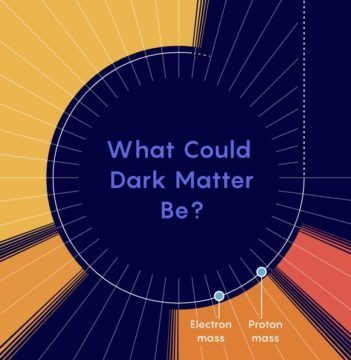Charlie Wood in Quanta:
 Ever since astronomers reached a consensus in the 1980s that most of the mass in the universe is invisible — that “dark matter” must glue galaxies together and gravitationally sculpt the cosmos as a whole — experimentalists have hunted for the nonluminous particles.
Ever since astronomers reached a consensus in the 1980s that most of the mass in the universe is invisible — that “dark matter” must glue galaxies together and gravitationally sculpt the cosmos as a whole — experimentalists have hunted for the nonluminous particles.
They first set out in pursuit of a heavy, sluggish form of dark matter called a weakly interacting massive particle, or WIMP — the early favorite candidate for the cosmos’s missing matter because it could solve another, unrelated puzzle in particle physics. Over the decades, teams of physicists set up ever larger targets, in the form of huge crystals and multi-ton vats of exotic liquids, hoping to catch the rare jiggle of an atom when a WIMP banged into it.
But these detectors have stayed quiet, and physicists are increasingly contemplating a broader spectrum of possibilities. On the heavy end, they say the universe’s invisible matter could clump into black holes as heavy as stars. At the other extreme, dark matter could spread out in a fine mist of particles thousands of trillions of trillions of times lighter than electrons.
More here.
